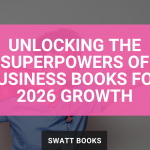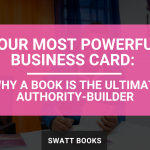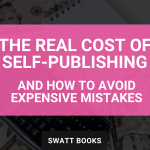Have you ever poured your heart into writing a book, only to wonder if anyone will actually read it?
Imagine crafting the perfect message, only for it to fall on deaf ears because it wasn’t written with the right audience in mind.
Many authors make the critical mistake of trying to write for everyone, but in reality, a book that aims to reach everyone often resonates with no one. The secret to writing a book that sells, makes an impact, and positions you as an authority is knowing your ideal reader.
Understanding exactly who your book is for shapes everything—from your writing style and content to your marketing strategy and publishing decisions. It ensures your book speaks directly to the people who need it most, turning casual readers into loyal fans and paying customers.
In this article, we’ll explore why knowing your ideal reader is essential at every stage of the process—writing, publishing, and marketing—so that your book not only reaches the right hands but also creates a lasting impact.
Introduction: The Power of Knowing Your Ideal Reader
If you’re a business owner considering writing a book, you likely have a wealth of knowledge, experience, and insights to share. But have you ever stopped to ask: Who is my ideal reader?
Many aspiring authors make the mistake of writing for everyone, but in reality, a book that tries to speak to everyone ends up resonating with no one. Understanding your ideal reader from the start can make the difference between a book that sells and one that gets lost in the crowd.
✅ Clarity in writing and messaging
✅ Stronger emotional connections with readers
✅ Better marketing and publishing strategies
✅ A more engaged and loyal audience
Let’s explore nine reasons why knowing your ideal reader is essential throughout every stage—from writing and publishing to marketing and beyond.
1. Clarity in Writing and Messaging
One of the first and most critical benefits of knowing your ideal reader is that it shapes your book’s content, tone, and messaging.
How It Helps:
📌 Defines Your Book’s Purpose: Are you writing to inspire entrepreneurs, teach leadership skills, or provide step-by-step strategies for business growth? Your reader’s needs will determine your book’s focus.
📌 Determines Writing Style & Language: Writing for C-suite executives requires a different tone than writing for solopreneurs or creative freelancers. Understanding your reader ensures you communicate effectively.
📌 Shapes Examples & Case Studies: The stories, data, and anecdotes you include should be relevant to your audience’s experiences.
Example:
- If you’re writing a book for startup founders, you might use case studies from tech companies and discuss fundraising.
- If your audience is small business owners, practical advice on cash flow management might be more valuable.
2. Stronger Emotional Connection with Readers
Readers buy books that speak to their experiences, challenges, and aspirations. By identifying your ideal reader, you can create a book that feels like it was written just for them.
Why It Matters:
🧠 Understanding Their Pain Points: What are your readers struggling with? Whether it’s scaling their business, improving leadership skills, or overcoming self-doubt, addressing these pain points makes your book relatable and valuable.
🎯 Tapping into Their Dreams and Desires: Readers aren’t just looking for information; they’re seeking transformation. Show them how your book helps them achieve their goals.
📖 Crafting Stories That Resonate: A well-placed story can make a lasting impact, but only if it feels personal and relevant to the reader.
Example:
- If your ideal reader is a mid-level manager looking to climb the corporate ladder, your book should include stories about leadership challenges and promotions.
- If your audience consists of freelancers trying to build a sustainable business, then stories about quitting a 9-to-5 job and growing an independent income will be more impactful.
3. Improved Marketing Strategy
Marketing a book successfully is much easier when you know who you’re marketing to.
How It Helps Your Marketing Efforts:
🚀 Targeted Social Media Campaigns: Instead of guessing where to promote your book, knowing your audience helps you choose the right platforms (LinkedIn for professionals, Instagram for creatives, etc.).
📩 Better Email Marketing: Your email newsletters can be tailored to what your audience cares about.
🎯 Effective Advertising: Facebook and Google ads work best when targeted to specific demographics and interests.
Example:
- If your book is aimed at female entrepreneurs, you might focus on Instagram and Facebook groups for women in business.
- If your book is for corporate executives, LinkedIn ads and partnerships with industry publications might be a better approach.
4. Streamlined Publishing Decisions
Understanding your reader impacts how and where you publish your book.
Key Publishing Considerations:
📖 Print vs. Digital vs. Audiobook: Younger, tech-savvy audiences might prefer eBooks and audiobooks, while corporate professionals may prefer hardcover editions.
🛍️ Retail vs. Online Platforms: If your audience shops on Amazon, prioritize Kindle and print-on-demand. If they prefer bookstores, consider traditional publishing.
💲 Pricing Strategy: High-level business books often command premium pricing, while mass-market books might need to be competitively priced.
Example:
- A book for small business owners may sell well on Amazon with an accompanying audiobook.
- A book for corporate executives may do better as a premium hardcover edition with bulk sales to companies.
5. Guidance for Content Structure and Design
The way your book looks and feels should appeal to your audience.
Key Considerations:
📚 Cover Design: A minimalist, professional cover might work for executives, while bold, creative covers appeal to entrepreneurs and freelancers.
📝 Book Layout: Busy professionals may prefer short chapters, bullet points, and action steps over lengthy narratives.
🎨 Typography and Colours: A finance book may use clean, professional fonts, while a branding book may feature modern, eye-catching designs.
Example:
- A book aimed at tech entrepreneurs might have a sleek, innovative design.
- A book for life coaches might use softer, more personal branding.
6. Avoiding Wasted Effort
Writing a book without a clear audience in mind can result in wasted time and money.
Common Mistakes When You DON’T Have a Defined Reader:
❌ Unfocused Content: Trying to please everyone results in generic, forgettable writing.
❌ Ineffective Marketing: Without a target audience, marketing becomes random and less effective.
❌ Missed Sales Opportunities: If your book doesn’t address specific needs, people won’t see the value in buying it.
Example:
- Instead of writing “A Guide to Business Success” (too broad), focus on “A Guide to Scaling Your Small Business to 7 Figures” (specific and targeted).
7. Community Building and Reader Engagement
A well-defined reader base allows you to build a loyal community.
How to Build a Community Around Your Book:
✅ Create a Facebook or LinkedIn group where readers can discuss your book’s insights.
✅ Engage on Social Media: Host live Q&As, share reader stories, and start discussions.
✅ Encourage Reviews & Testimonials: Happy readers become brand ambassadors for your book.
8. Aligning with Your Goals as an Author
Your personal and professional goals as an author should align with what your ideal reader needs.
Ask Yourself:
- Do I want to position myself as a thought leader? → Write for industry professionals.
- Am I using this book to attract new clients? → Write for potential customers.
- Do I want my book to be widely accessible? → Write for a mass-market audience.
Knowing your reader ensures your book serves both your goals and theirs.
9. Driving Reader Engagement and Retention
Finally, understanding your reader helps you keep them engaged beyond the book.
Strategies to Keep Readers Engaged:
📩 Email Newsletters – Offer bonus content and updates.
📹 Video Content – Create YouTube or webinar series based on your book.
📕 Follow-Up Books – If readers love your first book, they’ll buy your next one!
Engaged readers become lifelong fans—not just one-time buyers.
Final Thoughts: Knowing Your Ideal Reader is the Key to Success
Before you write a single word of your business book, ask yourself: Who am I writing for?
By defining your ideal reader, you will:
✅ Write with clarity and purpose
✅ Create a stronger emotional connection
✅ Market more effectively
✅ Build a loyal audience
A successful business book isn’t just about what you want to say—it’s about what your audience needs to hear.
Start with your reader in mind, and your book will be unstoppable. 🚀
At the heart of every successful book is a deep understanding of its audience. Knowing your ideal reader isn’t just a writing exercise—it’s the foundation of your entire publishing journey. It shapes your message, strengthens your connection with readers, and ensures your marketing efforts hit the mark. Whether you’re writing to educate, inspire, or build your brand, having clarity on who you’re writing for will make all the difference.
Now, it’s time to take action. No matter where you are in your authorship journey, the next step is clear:
📖 If you have a finished manuscript and are ready to publish, let’s talk.
Your book deserves a publishing strategy that reaches the right audience and establishes your authority. At SWATT Books, I specialize in guiding authors through a seamless publishing process, ensuring their book aligns with their brand, speaks to their ideal readers, and maximizes its impact. Book a free consultation today, and let’s map out your publishing journey together.
📝 Still in the planning or writing phase? Start with a solid foundation.
If you’re still refining your book idea, outlining your chapters, or struggling to structure your content, my Write Strategy Checklist will help you navigate the process with confidence. This step-by-step guide will ensure your book is positioned for success from the very beginning. Download your free copy now and take the first step toward writing a book that truly connects with your ideal reader.





